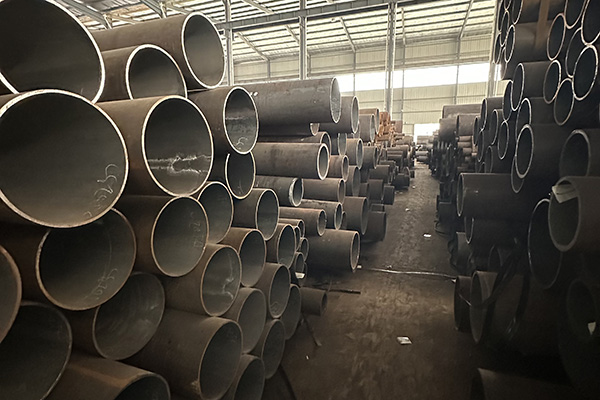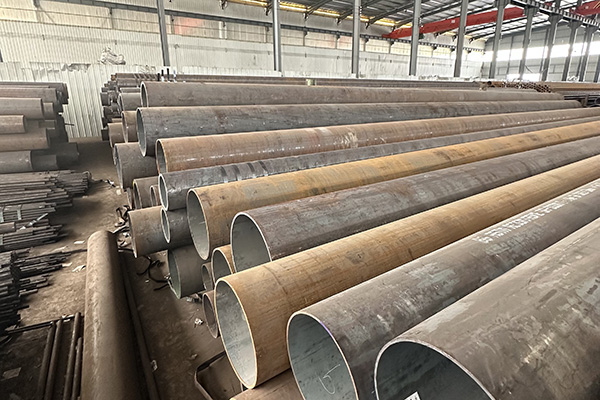
Why Cryogenic Alloy Pipe Matters
In engineering projects where extremely low temperatures are part of daily operations, material failure is not an option. That is where the cryogenic alloy pipe plays a critical role. Designed with specific metallurgical properties, these pipes ensure both strength and ductility, avoiding brittle fractures in environments such as LNG terminals or chemical plants.
Compliance with API 5L standards and grades such as X52Q provides a proven benchmark for safety and performance. To meet growing international demand, sourcing from a China supplier with bulk manufacturing capability helps guarantee both cost efficiency and supply stability.


Understanding API 5L and X52Q
API 5L Framework
The API 5L specification sets requirements for line pipes used in oil, gas, and chemical sectors. Covering chemical composition, mechanical strength, and testing methods, it ensures consistent performance across diverse service conditions.
The X52Q Grade
The X52Q variant of API 5L is particularly suitable for cryogenic service:
High mechanical strength to handle pressure loads.
Quenched and tempered finish (Q), improving fracture toughness.
Resistance to brittle failure, even at ultra-low temperatures.
Excellent weldability, essential for pipeline construction.
Because of these qualities, X52Q has become a preferred material for cryogenic alloy pipe in LNG, refinery, and energy infrastructure projects.
Core Applications of Cryogenic Alloy Pipe
LNG transport pipelines – Moving liquefied natural gas safely at cryogenic temperatures.
Petrochemical industries – Handling extremely cold feedstocks and storage operations.
Oil & Gas infrastructure – Serving pipelines exposed to severe cold.
Refinery operations – Supporting low-temperature processing.
Cryogenic storage systems – Ensuring structural integrity in tanks and distribution networks.
Advantages of Using API 5L X52Q
Reliability under extreme cold: Maintains toughness and avoids sudden fracture.
Longevity: High resistance to fatigue and corrosion.
Operational efficiency: Less downtime, greater durability.
Global compliance: Conforms with API 5L and related standards such as ASTM and ASME.
Industrial scalability: A Chinese manufacturer with bulk supply capacity can meet both domestic and international project requirements.

Testing and Quality Control
For cryogenic alloy pipe to perform safely in the field, manufacturers and end-users apply strict quality procedures:
Ultrasonic and radiographic inspection to detect hidden flaws.
Hydrostatic testing to validate pressure resistance.
Charpy impact testing at low temperatures to confirm toughness.
Material traceability for compliance and certification.
Why Chinese Manufacturers Lead the Market
Selecting the right production source is crucial. Partnering with a China supplier provides multiple benefits:
Proven capability in API 5L X52Q manufacturing.
Bulk production capacity, confirming the supplier’s manufacturer status.
Flexible options tailored to project specifications.
Competitive costs without compromising international quality requirements.
With these advantages, Chinese manufacturers are now trusted contributors to global cryogenic pipeline projects.
Conclusion
The cryogenic alloy pipe remains an indispensable solution for industries that operate in ultra-low temperature environments. With API 5L X52Q material standards, these pipes deliver the required combination of strength, toughness, and safety.
Choosing a reliable China supplier with bulk supply capabilities ensures not only compliance but also consistent quality and long-term availability. For LNG, petrochemical, and energy projects worldwide, cryogenic alloy pipes stand as the backbone of secure and efficient operations.
References
GB/T 7714:Nykyforchyn H, Zvirko O, Dzioba I, et al. Assessment of operational degradation of pipeline steels[J]. Materials, 2021, 14(12): 3247.
MLA:Nykyforchyn, Hryhoriy, et al. "Assessment of operational degradation of pipeline steels." Materials 14.12 (2021): 3247.
APA:Nykyforchyn, H., Zvirko, O., Dzioba, I., Krechkovska, H., Hredil, M., Tsyrulnyk, O., ... & Pala, R. (2021). Assessment of operational degradation of pipeline steels. Materials, 14(12), 3247.





